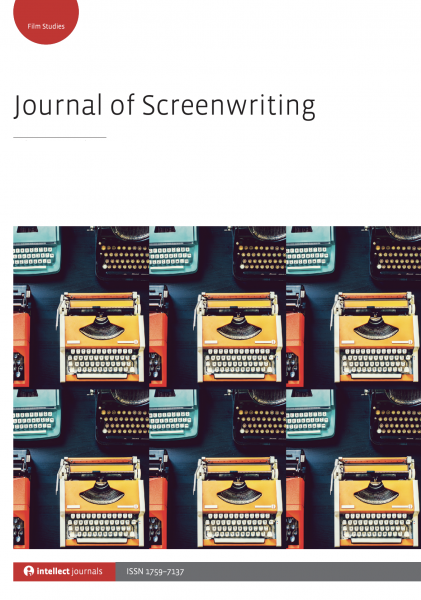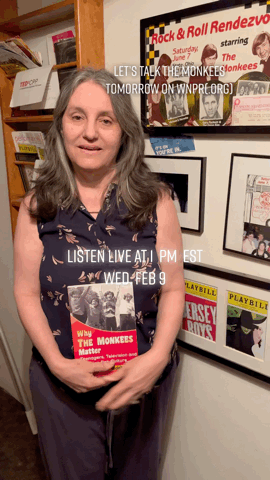Transcript:
…and then this unreliable narrator thing is a new thing I learned when I got involved in academia and that’s when you look at the interviews that happen with the men who founded Hollywood, they forget to mention the women who did it with them or they mention women without mentioning their names. One of my favorite sad examples is a woman named Jeanie MacPherson – who wrote several westerns under Cecil B DeMille – and you know if students study film history they’ve all heard of Cecil B. DeMille and they rarely hear of Jeanie MacPherson but on almost any movie he made that made money, she wrote it but she died young and he lived on another 30 years and he did an oral history and when they asked him about working with her he said she wasn’t a great writer. I kept her around because she needed a job but I did most of the work and that’s what goes down in the history books because she didn’t get to tell her side and so to me that’s the saddest part of this, is they disappeared and nobody – they didn’t even know they were going to disappear
Host: I think that will be familiar to a lot of people from a lot of different perspectives those types of those types of stories.
The Stephens College MFA in TV and Screenwriting is building a relationship with the Autry Museum of the American West since both organizations are devoted to bringing out more diverse and untold stories. Last year we were able to take our cohort of graduating MFA candidates to the museum’s theatre for a showing of Michael Wilson’s Salt of the Earth and we had plans to present a film of our choice this year – but of course the pandemic changed all that. Instead, Autry Curator Josh Garrett-Davis asked me if I would sit for an interview about female screenwriters in the western genre and so “When Women Wrote Westerns” came to be a part of their “What Is a Western? Interview Series”.
I had a great time discussing so many wonderful women writers – from Jeanne MacPherson to D.C. Fontana to Edna Ferber to Emily Andras. If you love westerns I suggest you watch Josh’s other interviews covering everything from the work of Native Americans in Western movies to films in the western-horror hybrid. — ![]()
What this entire presentation
As part of a series exploring the significance of the Western genre and the ways in which the movies shape our understanding of the American West, Autry Curator Josh Garrett-Davis interviews Professor Rosanne Welch about the women screenwriters of Hollywood and their contributions to the Western genre.
Find more information at the Autry Museum of the American West
Podcast: Play in new window | Download
Subscribe: RSS
![04 More On Unreliable Narrators from What Is a Western? Interview Series: When Women Wrote Westerns from the Autry Museum of the American West [Video]](https://rosannewelch.com/wp-content/uploads/2022/07/rmw-western-04.jpg)
![03 Unreliable Narrators from What Is a Western? Interview Series: When Women Wrote Westerns from the Autry Museum of the American West [Video]](https://rosannewelch.com/wp-content/uploads/2022/07/rmw-western-03.jpg)
![02 Why Study Women Screenwriters from What Is a Western? Interview Series: When Women Wrote Westerns from the Autry Museum of the American West [Video]](https://rosannewelch.com/wp-content/uploads/2022/06/rmw-western-02.jpg)
![01 Introduction from What Is a Western? Interview Series: When Women Wrote Westerns from the Autry Museum of the American West [Video]](https://rosannewelch.com/wp-content/uploads/2022/06/what-is-a-western-01-1-1200x675.jpg)
![01 Introduction from What Is a Western? Interview Series: When Women Wrote Westerns from the Autry Museum of the American West [Video]](https://rosannewelch.com/wp-content/uploads/2022/06/what-is-a-western-01.jpg)


![01 Introduction and Stephens College MFA In TV and Screenwriting from In Conversation with Dr. Rosanne Welch and Intellect Books [Video]](https://rosannewelch.com/wp-content/uploads/2022/03/rmw-intellect-01-1-1200x675.jpg)
![01 Introduction and Stephens College MFA In TV and Screenwriting from In Conversation with Dr. Rosanne Welch and Intellect Books [Video]](https://rosannewelch.com/wp-content/uploads/2022/03/rmw-intellect-01.jpg)





![02 Peg Lynch from “VISIBLE STARS: Women in Early TV” for the American Women Writers National Museum [Video]](https://rosannewelch.com/wp-content/uploads/2021/12/rmw-visible-stars-early-tv-02-1200x675.jpg)


